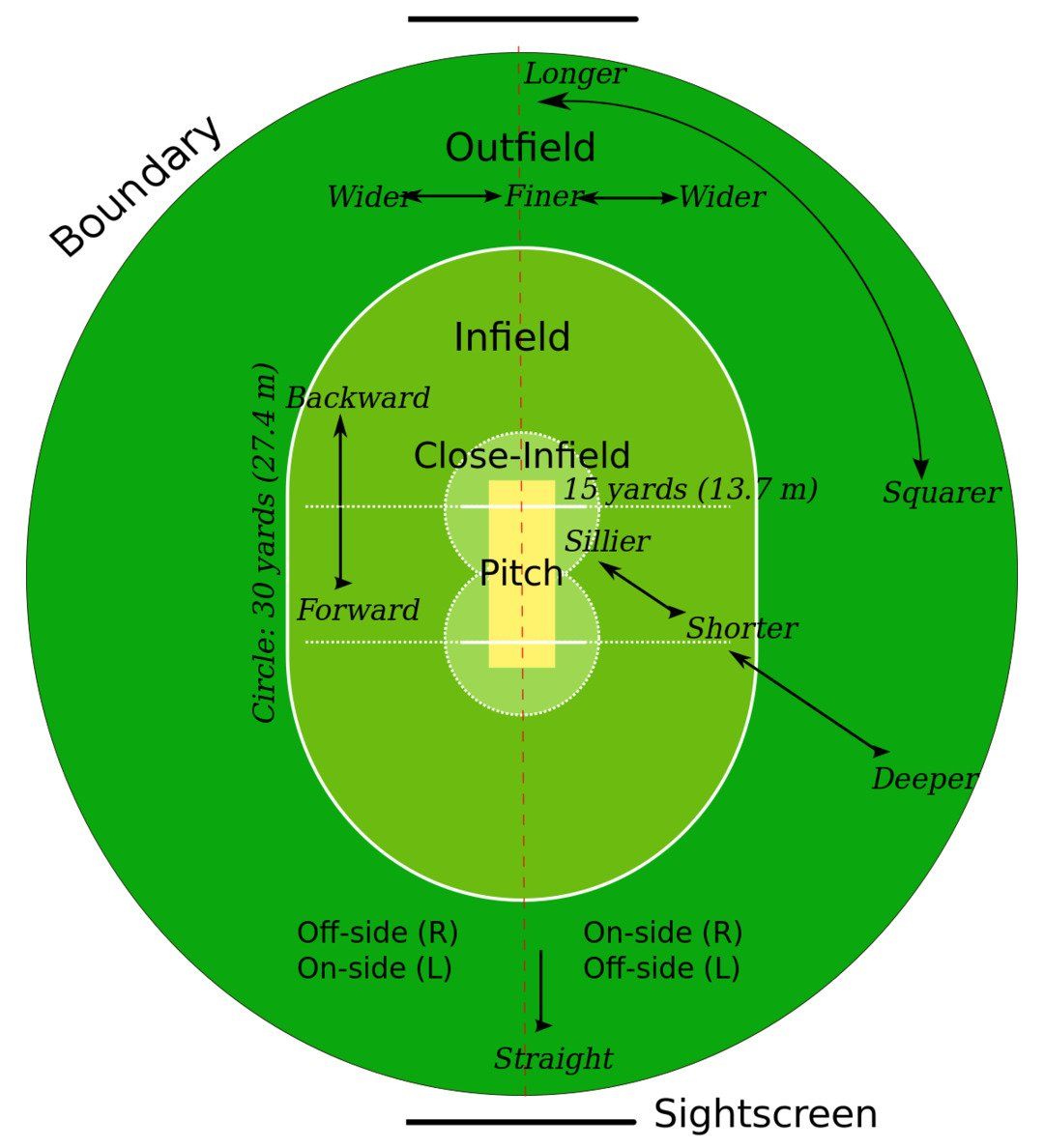Fundamental Baseball Regulations
” Baseball is a simple activity to me. Just go out and sing; keep it simple. Shane Warne
Cricket, also referred to as the Gentleman’s activity, is much more complex than the American story that was cited. It is a feeling in and of itself. It is about the aspirations of 4.5 billion persons from the countries that take part in this fantastic sport. But more than anything, it’s a strategic activity.
Over the past decade, baseball has undergone numerous evolutions. Since the initial Test Cricket, more styles have emerged. The rise in the number of international athletes has been instantly correlated with this. However, the game’s expansion has also been a result of an alternative leisure angle.
In tomorrow’s article, we attempt to reconstruct the cricket game from damage. We will examine all of the various baseball rules that apply in this manual for beginners. From the perspective of a beginner, we will also go over the various details of the sport.
Glossary of Cricket
Batting: In bat, a baseball player by the name of the player attempts to score runs for his team.
Ball- In bowling, the spinner, a cricket player, pushes the ball in the direction of the batsman in an effort to stop him from scoring runs.
Six ball deliveries make up an about in bowling.
Shipping is the term used when a bowler bowls one game in the direction of the player.
Cricket Run: One Run is when the batting team receives one point and it is added to their staff overall.
A wicket keeper is a baseball player who positions himself several yards behind the stumps of the opposing conclusion. If the player gets a little advantage on the ball with his bat, it is his responsibility to get it. In this circumstance, the ball team can take the batsman’s innings.
Crease-Crease is a 1.22-meter container that is placed in front of the trees on either side.
A batsman’s side of the field that he is facing is referred to as the Off-side and Leg &— side. The Leg-side is the other area where he faces his rear.
Three identically sized sticks are buried in the ground on either side of the 22-yard field, Stumps & amp, and Bails-Stumps. The two items atop the trees are referred to as knocks.
Free Hit: In restricted overs cricket, the batting team receives a free hit in addition to the benefits of the no ball when the bowling team bowls one. A Free Strike indicates that the player may become Bowled Out or Caught Out on the following delivery. Simply Work Out is possible for him.
Cricket Styles
There are mainly two bowling types that are played all over the world. Therefore, throughout the world, these types are altered and modified.
- Test baseball is a form of cricket that allows for endless innings. Over the course of five weeks, a test cricket match is played. Both groups play two innings each during the five weeks of enjoy. The number of runs scored over the course of those five times determines whether the activity is won or lost. If neither team can come up with a clear winner by the end of day five, the match is deemed drawn.
- Limited Overs Cricket- As implied by the name, restricted overs baseball is played at specific times throughout the day. Each team plays one frame, and the staff with the most runs scored wins the match. Bowling with minimal overs is typically played as a 50 over or 20 over activity. Home leagues are now hosting 10-over games every year, which is a recent development.
The design of a baseball match
The Groups: There are eleven players on each side of the game. Batsmen, batsmen, and one wicket-keeper make up the eleven people. Both groups are capable of having backups for emergencies. The Twelfth Man is the name of the leading replacement person.
Two players play the game from the bowling side at the same time. The player on strike is the person who receives the ball from the opposing side. The other player on the opposing end of the 22-yard field is referred to as the non-striker’s end. Six deliveries( one through ) are bowled by a bowler to the players. No derby is allowed to bucket two innings in a row. The game is adjudicated by an umpire( referee ) from behind the trees close to the non-striker’s end.
The game is played on a field with some distinctive colors, according to the baseball field image. The concrete ball, which extends to a distance of 22 yards, is located in the center of the field. This is where the actual activity occurs. Another irregular region with secondary importance is also present. The fielding( bowling ) team is subject to some restrictions as a result of the 30-yard circle surrounding the field.
Baseball playing field map. Commons / Nichalp Wikimedia
A baseball game and how the game is won or lost
In Limited Overs Cricket( four in Test Cricket ), a game of cricket is played over two wickets. A period of time known as an frame is when each part is either batting or bowling. When the ball team is able to take 10 batsmen from the enemy, it is said to be over. When the bowling team in Limited Overs Cricket bowls the predetermined number of wickets( 50 or 20 ), an frame is also referred to as finished.
The first bowling group has to fight the runs that were scored during the inning as the target in their subsequent innings. In the next inning, the group that bowled in the first must bat. The group that bats in the next game wins the game if they are able to score more runs than the opposing team did. They forfeit the device if they don’t comply. If both teams score the same number of runs, the match is declared a draw.
Plays are scored in what ways?
The following are the way a bowling team can score works:
Running between the wickets &— If a batsman hits the ball with the bat and manages to cross-over with the batsman on the non-striker's end on the 22-yard pitch, it is counted as one run. If both the batsmen manage to cross the pitch multiple amounts of time, then multiple runs are granted.
Boundaries- A barrier is when a player on the striker’s end is able to hit the ball past the ground-covering ropes or into the stands of the spectators. The works are therefore given based on the edge type. Four operates are awarded if the game even when touches the ground before passing the ropes. Six plays are awarded if the ball passes the cables without making any contact with the ground.
No basketball- The delivery is referred to as a No Ball if the batsman’s foot crosses the furthest collection of the crease on his end while the ball is being propelled. The bat team is given one move. Additionally, the derby must rebowl the game because it is not counted.
Large Ball: In cricket, this law is referred to as a large game if the bowler’s supply passes the batsman from the leg side, the widest portion of the crease, or far above his head. The goal is to give the player a chance to play back the ball because, under normal circumstances, it would be impossible to get to it. The batting team is given one work. Additionally, the spinner must rebowl the game because it is not counted.
Byes are runs that are given when the puck strikes any part of the bowler’s physique and they are run between the wickets. In this situation, the operates are added to the group overall rather than the bowler’s total. The Byes in baseball are referred to as Leg-Byes if any part of the body is being considered as the bye.
How are batsmen taken?
The To stop the bat team’s innings, the bowling team must take ten wickets. The innings can be obtained in the methods listed below:
Bowled &— If the batsman fails to hit the ball and the bails of the stumps go off after the ball hits them, the batsman is termed as Out. He has to leave the field and another player from the batting side takes his place. This hands the bowling team one wicket.
Caught Out &— If the batsman hits the ball and any player from the batting team including the wicket-keeper or the bowler manages to catch the ball without it touching the ground, the batsman is considered to be caught out.
Run Out- The bowling( fielding ) team is referred to as” Run Out” if they are able to strike the bails off either set of stumps before the batsmen have reached the crease. The ball team receives one wicket as the players running towards the close where the knocks have been removed are referred to as Out.
Stumped: This is a wicketkeeper’s true strength. The wicket-keeper behind the stumps can use the ball to hit the bails off if the batsman on the striker’s end misses and is outside the crease. The ball team receives one wicket as a result, and the batsman must return as Out.
Leg Before Wicket( LBW ) is the term used when the ball strikes the batsman’s leg after he fails to hit it and the leg acts as an obstruction in front of the stumps. It grants a wicket to the ball group.
As and when the activity has developed over the years, numerous new laws have emerged. However, the fundamentals have remained constant throughout. The fundamentals of play must be mastered in order for someone to succeed as a cricket player. To gain an advantage over the enemy team, the fundamentals can then be transformed into intricate tactics and strategies.




